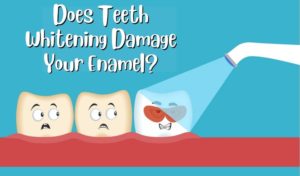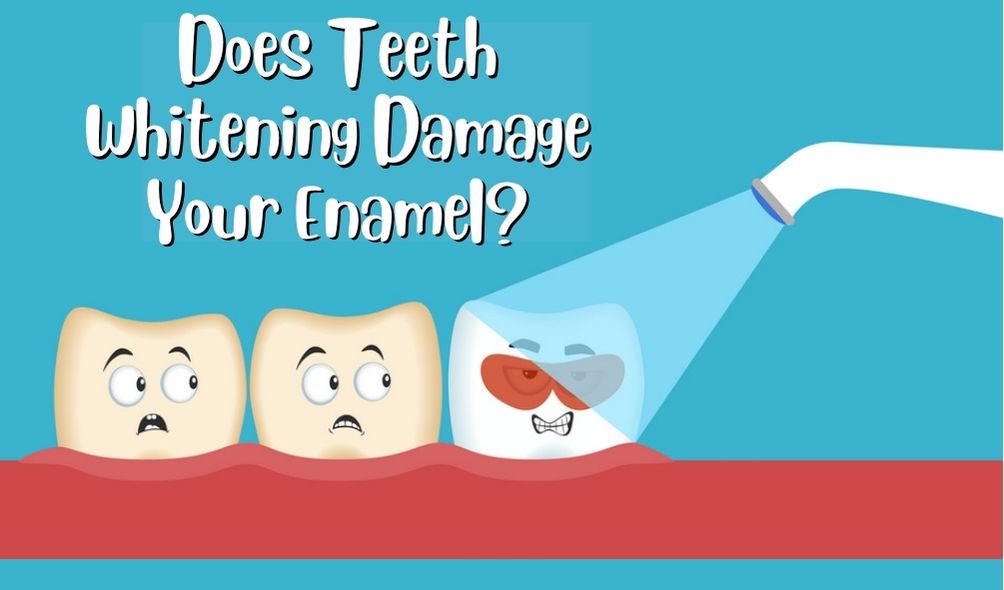Does Teeth Whitening Damage Your Enamel?
 Today, people are becoming more and more conscious of societal pressures when it comes to having the perfect smile. The lure of having pearly whites is just too hard to resist these days. The health of the tooth enamel is directly associated with the color of your smile. But what if you notice a stain on your teeth? Can you get it whitened? What about all the stories you heard about teeth whitening procedures damaging the enamel?
Today, people are becoming more and more conscious of societal pressures when it comes to having the perfect smile. The lure of having pearly whites is just too hard to resist these days. The health of the tooth enamel is directly associated with the color of your smile. But what if you notice a stain on your teeth? Can you get it whitened? What about all the stories you heard about teeth whitening procedures damaging the enamel?
Why is the Tooth Enamel Important?
You probably have already heard about tooth enamel, but do you know its role in protecting your teeth? Enamel is the tooth’s outer layer that covers the crown, the part of the tooth that is visible from the gum. The hard outer surface of teeth is its first defense against chemical and physical harm. The enamel protects the dentin, the softer, more sensitive inner tooth. The tooth enamel also protects the teeth from daily use, including biting, chewing, grinding, and crunching.
Bacteria exposure from starches, sugar, and acidic substances make the enamel prone to breaking down. Some of the most common signs of enamel erosion include yellow discoloration, sensitivity to certain food items and temperature, and the appearance of indentions on the surface of the teeth. Another sign of enamel erosion is that teeth become irregular, rough, and jagged.
What to Do When Enamel Erodes?
Enamel might be a tough tissue; however, it is not indestructible. Take note that it does not have any living cells so it cannot repair itself if it gets damaged, unlike the rest of the human body. So once the enamel is gone, it is gone forever. Fortunately, there are a few prevention methods to avoid enamel loss.
The easiest way to do so is to avoid acidic and sugary fruits and beverages, which are the most damaging substances to the enamel. When these stick to the teeth, it interacts with bacteria, producing lactic acid that will eat away healthy minerals. This process causes the enamel to break down. If you cannot give them up, thoroughly brush your teeth to push phosphates and calcium into the tooth and harden the enamel. Also, when eating sugary food, avoid hard candies if you can. If you cannot, try sucking instead of biting on them.
Aside from external environmental factors, enamel can also be damaged by internal factors.
Enamel can also be damaged from wear or tear friction. Friction usually happens during sleep when you grind or clench your teeth. The physical wear and tear of the enamel in the teeth happen when you brush too hard, floss improperly, or bite on hard objects.
Are Teeth Whitening Safe for the Enamel?
The yellow discoloration of the teeth is perhaps the most common sign of damaged enamel. So does teeth whitening damage the enamel? The answer is no. The main portion of the teeth, which is called dentin, is the portion of the tooth that is responsible for the color of the teeth. They are first coated with a whitening solution on the front surface. The solution travels through the tooth enamel to the dentin. From here, the stained tissue in the inner layer will start to lighten. The whole process can take about one hour.
What is the Treatment for Enamel Loss?
Enamel loss is commonly treated with bonding. This is the process where a tooth-colored resin is applied on the surface of the damaged teeth. The resin will cover the yellow discoloration and protect the tooth. However, in severe cases, your dentist might suggest getting a veneer or crown to prevent further damage.





 |
|